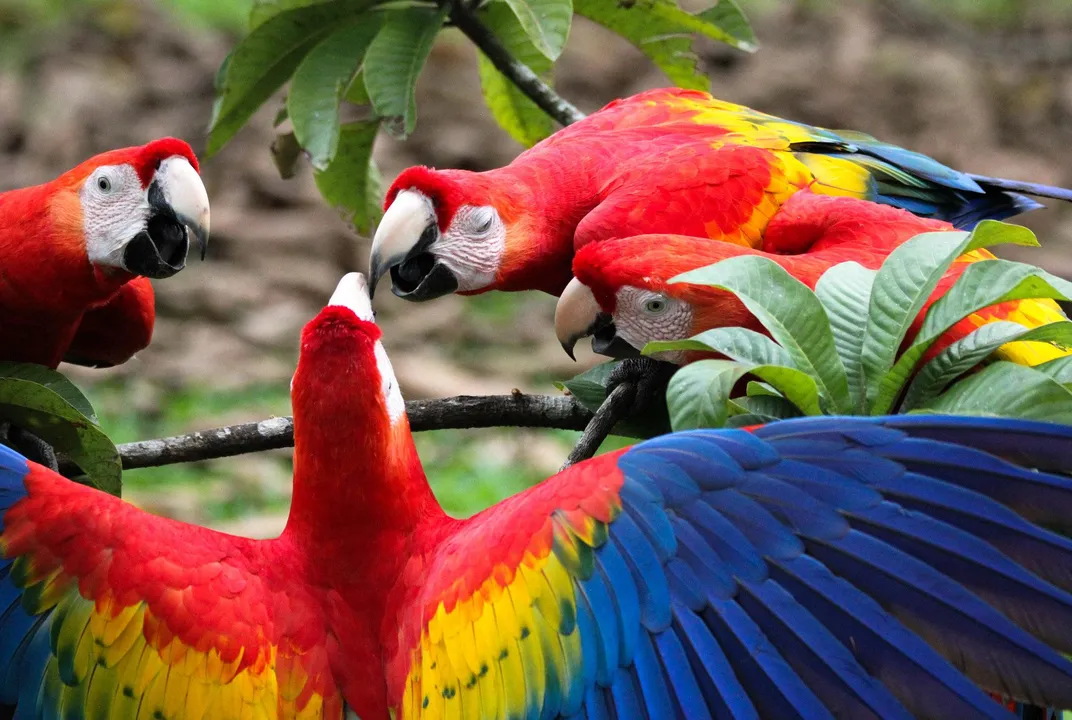The statement “As it turns out, some birds are part of intricate civilizations” alludes to new findings or observations made by scientists that certain bird species have intricately structured societies that bear similarities to those of civilizations.
The term “intricate civilizations” implies a certain level of organization and intelligence in the social interactions and behavioral patterns of these birds. Recent studies, for instance, have shown that some bird species, including parrots and crows, display intricate social systems and cultural customs within their communities. These birds may be seen using tools, working together to hunt, and even communicating in a language-like manner. Because of this, scientists have compared the intricacy and structure of relationships in these societies to those in human civilizations. This revelation creates new opportunities for the study of animal cognition and behavior and challenges preconceived notions about the intellect and social complexity of non-human animals. Overall, the statement emphasizes how sophisticated and intriguing bird communities are, as well as any potential parallels between them and human civilizations.
Some implications of this statements are:
Social Intricacy:
The phrase “intricate civilizations” suggests that these birds are involved in more complex social structures and activities than just basic communication. Within their groupings, they could exhibit cooperative behaviors, division of work, and hierarchical organization. Birds may also have extensive communication systems, cultural customs, and problem-solving skills as part of their elaborate civilizations. These sophisticated social behaviors and cognitive capacities point to these bird species’ high levels of intelligence and adaptability. It is also hypothesized that these complex civilizations have developed as a means of surviving and prospering in their surroundings, allowing them to successfully deal with difficulties and changes. All things considered, the study of complex bird civilizations offers intriguing insights into the many and complex ways that animals interact and arrange themselves within their communities.
Coordination & Collaborating:
The term suggests that these birds participate in cooperative activities and teamwork in addition to being solitary beings. This may include practices like group nesting, cooperative parenting, or group defense against intruders. Furthermore, their natural capacity to engage with other members of their species and establish social relationships and hierarchies within their groupings may also be described as sociable. Individuals may help one another and share information, like where to find food or possible hazards, thanks to this social activity. All things considered, being gregarious indicates that these birds do well in social environments and have a high degree of flexibility and communication abilities within their communities.
Cultural Considerations:
The mention of “intricate civilizations” suggests that these birds could have cultural aspects in their communities. This could involve passing down customs, information, or taught habits from one generation to the next. In addition, the mention of “intricate civilizations” raises the possibility that these birds have intricate communication networks, hierarchies, and social structures that influence their general societal dynamics. This may indicate that their civilizations are built upon a more complex and flexible system of social organization rather than only on innate behavior. It also begs the question of whether certain bird groups have certain cultural customs and behaviors that set them apart from others. This option highlights the variety and depth of bird communities and provides a fresh perspective on avian behavior and social relationships. All things considered, the reference to “intricate civilizations” implies that there is still a great deal to study and understand about the social and cultural existence of these amazing animal.
Organized socities:
The term “civilizations” refers to the level of structure and hierarchy among the bird species. This might involve defining roles for various group members, establishing norms or behavioral patterns, and maybe even cultural components. Moreover, the term “civilizations” suggests a level of development and intricacy among bird groups. It suggests the existence of complex organizational and communication systems in addition to a degree of social structure innovation and evolution. This word also implies sustainability and long-term stability, implying that these bird groups have become entrenched and are flourishing in their surroundings. All things considered, the term “civilizations” conjures up images of highly developed, prosperous, and orderly bird groups with intricate social structures and behavioral patterns.
All things considered, which calls into question earlier theories of bird behavior and emphasizes the need for more research and understanding of avian social systems. The study of intricate bird communities advances our knowledge of animal behavior, social evolution, and the diverse ways that different species have adapted to their surroundings.
This acknowledgement emphasizes how crucial it is to appreciate the complex social structures and hierarchies that exist among bird populations. By exploring the intricacies of avian social structures, scientists may learn more about the processes that have shaped the development of avian social behavior and how these societies have adapted to survive in a variety of environments.
This acknowledgement also highlights how important it is to research bird societies in order to guide conservation efforts. Gaining knowledge of the dynamics of bird community structures can help protect and sustain bird populations by shedding light on how human activities affect these communities.
In conclusion, the realization that studying complex bird societies is an essential field of study emphasizes how important it is to recognize and comprehend the variety of social behaviors and adaptations seen in bird species. Gaining a thorough grasp of animal behavior, social evolution, and the complex ways that many species have adapted to their environments requires having this insight.
- About the Author
- Latest Posts
A passionate advocate for all natural and sustainable ideas. With a background in sustainable economics science and a deep love for nature, Sojy has dedicated his career to promoting eco-friendly practices and encouraging others to live a more sustainable lifestyle. He is an avid hiker, gardener, and cook, and loves experimenting with natural ingredients in his recipes and lifestyle routines. Sojy believes that small changes can make a big impact and is constantly seeking out new ways to reduce his carbon footprint and inspire others to do the same




